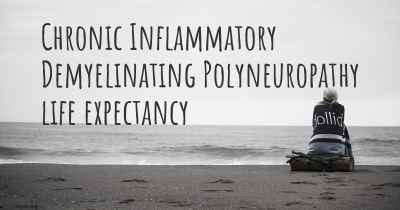Chronic Inflammatory Demyelinating Polyneuropathy diet. Is there a diet which improves the quality of life of people with Chronic Inflammatory Demyelinating Polyneuropathy?
Are you aware of a diet that can improve the quality of life of people with Chronic Inflammatory Demyelinating Polyneuropathy? Is there a diet that is suggested to avoid when having Chronic Inflammatory Demyelinating Polyneuropathy? See if there is a diet that can improve the quality of life of people with Chronic Inflammatory Demyelinating Polyneuropathy, recommended and to avoid food when having Chronic Inflammatory Demyelinating Polyneuropathy

Chronic Inflammatory Demyelinating Polyneuropathy (CIDP) Diet
Chronic Inflammatory Demyelinating Polyneuropathy (CIDP) is a rare autoimmune disorder that affects the peripheral nerves, causing weakness, numbness, and impaired motor function. While there is no specific diet that can cure CIDP, adopting a healthy and balanced eating plan can help improve the overall quality of life for individuals with this condition.
The Importance of a Balanced Diet
A balanced diet is crucial for individuals with CIDP as it can help support the immune system, reduce inflammation, and provide essential nutrients for nerve health. Here are some key dietary considerations for managing CIDP:
1. Anti-Inflammatory Foods
Chronic inflammation is a hallmark of CIDP, and consuming anti-inflammatory foods can help alleviate symptoms. Include foods rich in omega-3 fatty acids, such as fatty fish (salmon, mackerel, sardines), walnuts, flaxseeds, and chia seeds. These foods have been shown to reduce inflammation in the body.
2. Antioxidant-Rich Foods
Antioxidants help protect the body's cells from damage caused by free radicals, which can contribute to inflammation. Include a variety of colorful fruits and vegetables in your diet, such as berries, leafy greens, bell peppers, and citrus fruits. These foods are packed with antioxidants and can support overall health.
3. Whole Grains
Choose whole grains over refined grains to ensure a steady release of energy and to provide essential nutrients. Whole grains like quinoa, brown rice, oats, and whole wheat bread are rich in fiber, vitamins, and minerals that support nerve health.
4. Lean Protein
Include lean sources of protein in your diet, such as skinless poultry, fish, legumes, and tofu. Protein is essential for muscle repair and can help maintain muscle strength, which is important for individuals with CIDP.
5. Healthy Fats
Include healthy fats in your diet, such as avocados, olive oil, nuts, and seeds. These fats provide essential fatty acids that support nerve function and overall health.
6. Hydration
Staying hydrated is important for individuals with CIDP as it helps maintain proper nerve function and supports overall health. Aim to drink an adequate amount of water throughout the day and limit the consumption of sugary beverages.
Additional Considerations
In addition to following a balanced diet, individuals with CIDP should consider the following:
1. Vitamin and Mineral Supplements
Consult with a healthcare professional to determine if you need any specific vitamin or mineral supplements. Some individuals with CIDP may require additional supplementation to meet their nutritional needs.
2. Food Sensitivities
Pay attention to any food sensitivities or allergies you may have. Some individuals with CIDP may find that certain foods exacerbate their symptoms. Keeping a food diary can help identify any potential triggers.
3. Medication Interactions
Some medications used to manage CIDP may interact with certain foods or supplements. It is important to discuss any dietary changes or supplements with your healthcare provider to ensure they are safe and do not interfere with your medication regimen.
4. Individualized Approach
Every individual with CIDP is unique, and what works for one person may not work for another. It is important to work with a healthcare professional or registered dietitian who can provide personalized guidance based on your specific needs and medical history.
Conclusion
While there is no specific diet that can cure CIDP, adopting a balanced eating plan that includes anti-inflammatory and antioxidant-rich foods, whole grains, lean protein, and healthy fats can help improve the overall quality of life for individuals with CIDP. Additionally, staying hydrated, considering vitamin and mineral supplements, being mindful of food sensitivities, and discussing dietary changes with a healthcare professional are important considerations for managing CIDP effectively.








